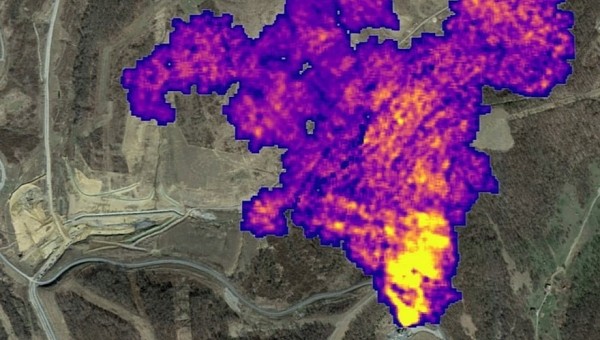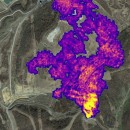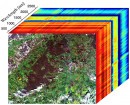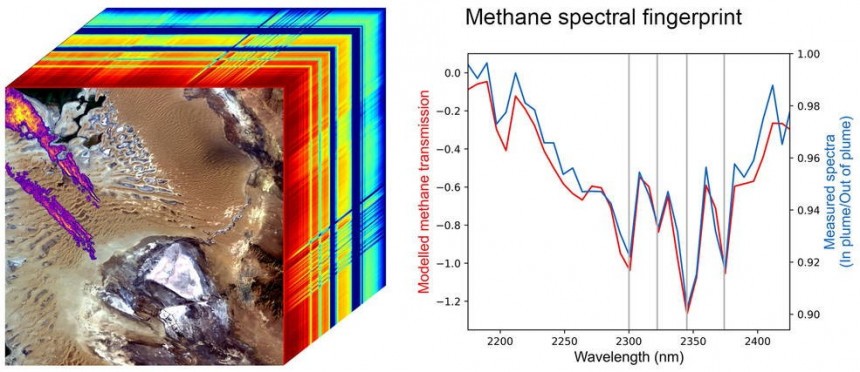Internal combustion passenger cars get a bad reputation for a very good reason. Those platinum-packed, performance-choking catalytic converters exist for a purpose, of course. But too often, ICE is the focal point of the blame for an endlessly complex phenomenon that is climate change.
In truth, dozens of different factors contribute in a not unsubstantial way to the proven science of climate change. But it's the job of none other than NASA to study the effects of a phenomenon contributing at least as much to climate change as cars, trucks, and airplanes. It's not one of NASA's more glamorous missions, but it's every bit as important as Artemis.
Using a fleet of Low Earth Orbit satellites and even real estate on the International Space Station, the Earth Surface Mineral Dust Source Investigation (EMIT) mission's most recent work relates to the studying plumes of gasses purported to be vital in the contribution to rapid climate change from pluming into massive atmospheric clouds which scientists have observed stretching for miles at a time.
Since just July 2022, the EMIT initiative's discovered at least 50 phenomena known as "super-emitters." These vast plumes of many different lighter-than-air elements, but most often methane, emit a telltale signature when viewed from the infrared spectrum. Through this lens, we can see that clouds of gasses seven miles (11.2) blend in with the surrounding atmosphere without humans down below being any the wiser.
According to NASA statistics, methane accounts for far less total emissions into the atmosphere than more common pollution like carbon dioxide, nitrogen, and whatever else comes out of an emissions-deleted Cummins truck with the exhaust pipes dumping out the rear bed at 3 a.m. The real problem with methane in the context of provable climate change is not the quantity but rather the potency.
You see, methane is as much as 80 times more disruptive to the day-to-day homeostasis of the Earth's atmosphere than carbon dioxide or nitrogen. Methane molecules can linger in the atmosphere for far longer than anything else emitted from the exhaust pipes of cars and trucks. To make matters worse, it appears these super emitters can be either man-made or natural in origin.
Human industrial activity, no doubt, still plays a role, most notably in the form of petrochemical refinement and the energy sector, but also thanks to large landfills choked to the brim with methane-emitting trash. The full story of where all this methane comes from is at the heart of this mission.
In a sense, the data detected by NASA's EMIT program is humanity's best shot at finding its source and taming it. With so many super-emitters already discovered in a short timeframe, there's no telling how daunting of a task this might be. If we were betting people, we'd say it'd be a herculean effort.
"Some of the plumes EMIT detected are among the largest ever seen – unlike anything that has ever been observed from space," said Andrew Thorpe, a research technologist at JPL leading the EMIT methane effort. "What we've found in just a short time already exceeds our expectations." But what implications do super-emitter plumes like the ones found by the EMIT program have on the automotive industry?
Well, on the face of it, not very much at the moment. But this could change in a heartbeat if it's found that deposits of methane in the atmosphere are doing even more harm to the global environment than even all the internal combustion engines and lithium mining put together. Granted, that's not going to stop the inevitable transition away from internal combustion over to battery EVs. That's as good as set in stone.
If anything, expect restrictions on the levels of methane that ICE cars and trucks are allowed to emit to be reduced by an even larger degree. Ditto for the energy and manufacturing sectors. It's the least we can do when there are literally methane clouds rising from seemingly nowhere.
Using a fleet of Low Earth Orbit satellites and even real estate on the International Space Station, the Earth Surface Mineral Dust Source Investigation (EMIT) mission's most recent work relates to the studying plumes of gasses purported to be vital in the contribution to rapid climate change from pluming into massive atmospheric clouds which scientists have observed stretching for miles at a time.
Since just July 2022, the EMIT initiative's discovered at least 50 phenomena known as "super-emitters." These vast plumes of many different lighter-than-air elements, but most often methane, emit a telltale signature when viewed from the infrared spectrum. Through this lens, we can see that clouds of gasses seven miles (11.2) blend in with the surrounding atmosphere without humans down below being any the wiser.
According to NASA statistics, methane accounts for far less total emissions into the atmosphere than more common pollution like carbon dioxide, nitrogen, and whatever else comes out of an emissions-deleted Cummins truck with the exhaust pipes dumping out the rear bed at 3 a.m. The real problem with methane in the context of provable climate change is not the quantity but rather the potency.
Human industrial activity, no doubt, still plays a role, most notably in the form of petrochemical refinement and the energy sector, but also thanks to large landfills choked to the brim with methane-emitting trash. The full story of where all this methane comes from is at the heart of this mission.
In a sense, the data detected by NASA's EMIT program is humanity's best shot at finding its source and taming it. With so many super-emitters already discovered in a short timeframe, there's no telling how daunting of a task this might be. If we were betting people, we'd say it'd be a herculean effort.
"Some of the plumes EMIT detected are among the largest ever seen – unlike anything that has ever been observed from space," said Andrew Thorpe, a research technologist at JPL leading the EMIT methane effort. "What we've found in just a short time already exceeds our expectations." But what implications do super-emitter plumes like the ones found by the EMIT program have on the automotive industry?
Well, on the face of it, not very much at the moment. But this could change in a heartbeat if it's found that deposits of methane in the atmosphere are doing even more harm to the global environment than even all the internal combustion engines and lithium mining put together. Granted, that's not going to stop the inevitable transition away from internal combustion over to battery EVs. That's as good as set in stone.









